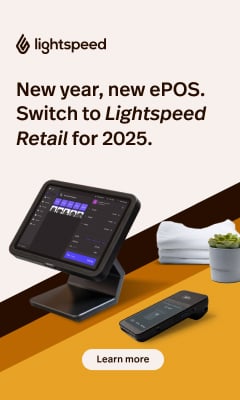Delegates enjoy lively debate at The Retail Bulletin Customer Loyalty Conference 2011
Over recent years data has become almost a cool commodity as a result of the insight and subsequent customer loyalty it can bring to organisations, and its appeal looks set to increase further as mobile devices become an integral part of loyalty programmes.
By Glynn Davis
Indicative of the potential role mobile will play in loyalty is the seriousness that Tesco is giving to the medium as it launches ‘apps’ for its Clubcard loyalty scheme. It also regards smart devices as vital components to the multi-channel model and for delivering loyalty to its customers.
Speaking at The Retail Bulletin Customer Loyalty Conference 2011 in London this week Janet Smith, Clubcard director at Tesco, told a packed room of delegates: “As a retailer we believe phones will be crucial to multi-channel and we launched a few apps that include scanning products to add to shopping lists and we’ve seen a significant number of transactions – between 30% and 50% – on our dotcom [home delivery service] that have been scanned.”
This sort of activity sits comfortably with its loyalty scheme as mobile commerce is a great generator of data and smart devices help create a close link between merchant and customer. Such is the power of the device as a conduit for a loyalty programme that Steve Gray, chief executive of Mobilize Systems, suggests they should be central to such schemes.
“For retailers without a current loyalty programme it’s a no-brainer to make mobile the centre of that because it removes the cost of paper-based coupons and [physical] redemption aspects. The great thing about mobile is that it takes out a great chunk of cost from operating loyalty programmes,” he argues.
Gray therefore predicts that as smart-phone penetration continues to increase it is likely that in 18 months time all loyalty programmes will enable customers to earn and redeem points via their phones.
Jon Worley, principal consultant for customer loyalty at The Logic Group, agrees mobile will have a massive effect on loyalty as well as payments: “For the past 10 years we’ve talked about mobile devices for payment and loyalty and it will be the next big thing. By 2013/14 we’ll have widespread use of mobile for these things.”
However, Gray warns that as the amounts of data in retailers’ businesses continues to explode – partly driven by mobile devices – “it brings extra complexity as retailers need to integrate mobile with other systems in their businesses so this will be an ongoing challenge”.
The data remains the oil that greases the wheels of loyalty and as such its handling is absolutely vital, which is why it is surprising that it is still not treated with the respect it deserves. This is the view of Ed Wrazen, vice president of marketing international for Harte Hanks Trillium, who told delegates that 30 per cent of companies have no strategy to improve their data. What makes this figure even more shocking is that customer data changes on average by 20 per cent per year.
“It very quickly degrades over time so it’s an ongoing process to keep data up to date. And this is a major challenge,” he says. But the returns from clean data can be significant, according to Nigel Turner, data consultant at NHT Data Consultancy, who revealed that BT undertook a 10-year programme ending in 2008 to improve the quality of data across its business and the result was bottom line benefits of a massive £625 million.
Without cleansed data the subsequent analysis will unlikely deliver meaningful insights on customer behaviour and in return loyalty. It is this insight that drives the whole Tesco Clubcard programme – and impacts across the whole of the business.
Smith says: “Every day it’s amazing what we learn from the millions of transactions going through the business. The volume of data is very scary and analysing it is not a traditional marketing skill and so you have to invest in this expertise.”
Tesco invests around £1 billion per year in Clubcard, which takes 1.5 per cent out of its six per cent margin, so it has to be sure it is gaining massively from the insight. The measurements it uses for success of Clubcard are its sales contribution to the business from both short-term uplifts (from promotions) and longer-term retention of customers.
It also has key KPIs that include: active Clubcard customers; churn; sales penetration (75 per cent of sales are from Clubcard members); and redemption of coupons (currently over 90 per cent).
Such has been the impact of the Tesco Clubcard (arguably the UK’s most successful loyalty programme) and the recognition by companies that they should be better utilising the mass of customer data that flows through their businesses that loyalty has undoubtedly crept up the agenda in recent years.
Antony Smith, head of CRM – group marketing at Gala Coral Group, says his company had been suffering from customer churn and that it had “so much data we didn’t know what we were doing with it”.
Even though it had a CRM system in place Smith admits the company had “lost sight of what it was trying to do, which was to get customers to spend more with us and to recommend us”. “We had too much data, not enough insight, and no single view of the customer, which is the genesis of all one-to-one marketing,” he suggests.
The plan was to “de-clutter” the business – involving a £2 million investment in a new database which underpinned the new simple strategy that Smith had chosen to implement. It involved simpler communications to customers and clear targets.
As a result of the work done to date the level of wasted marketing activity has been reduced by 50 per cent (direct mail pieces have fallen from 10 million to 4.5 million per year as they are now more targeted) and the return on investment (ROI) from its loyalty programme has rocketed 400 per cent on key campaigns.
It is a similar story at Whitbread Hotels & Restaurants, with its head of CRM and loyalty Gavin Hawthorn, telling delegates that the organisation had become “very operationally driven but needed more of a focus on customers and on increasing their retention”.
Major steps have been taken including the implementation of a CRM system that he says has done a “superb” job of surveying guests and helping make all employees accountable to satisfying guests”. But the next challenge, he says, is to create a single customer view that will enable Whitbread to see the frequency of stay, churn rates, and ultimately deliver a calculation of a customers’ value to the business.
“The real key for us will be to focus on the best high potential customers first. What can be made from them? We’ll focus on a ‘few of the many’,” he explains.
Retention of customers certainly proved to be a common issue among the presenters at the Customer Loyalty Conference 2011 including Jeremy Waite, head of social media at Phones 4U, who told delegates that last year the business had “bad customer retention and I was brought in to keep them”. The plan was to use social media to engender greatly loyalty to the company.
The main channel used is Facebook and Waite says it has sent “retention through the roof”. Despite this sort of success, there is still a great concern in the retail sector that it is very difficult to measure the ROI of such social media activity. The answer from Phones 4U is that the company prefers to measure return on influence.
Using crude calculations it has worked out that the value it has gained from social media as a result of increased retention is approximately £10 million. “A lot is based on assumptions but it is very powerful to me to go to the board with this,” he says.
Phil Szymala, business insight director at ICLP, agrees that the value of social media can be calculated but he believes it is dependent on linking the activity with a retailers’ customer database.
This linking of data throughout a business will without doubt prove increasingly important to retailers and play a crucial role in their loyalty programmes and ultimately the future success of their organisations.













